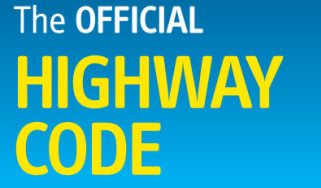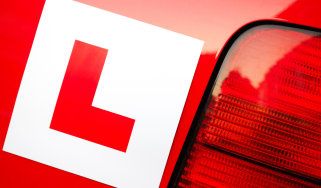Practical driving test tips: how to prepare & pass first time
Are you ready for your practical driving test? Prepare for the big day with our guide and top tips.
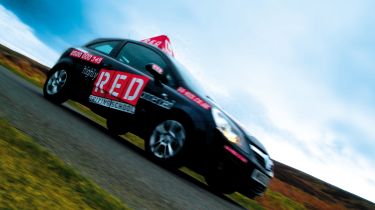
It’s a hugely pivotal moment for any learner driver when the driving instructor turns to them and utters those momentous words: “I think you’re ready for the test”. It’s a landmark occasion but, unless you have nerves of steel, the prospect of taking your practical driving test will bring about at least some anxiety.
This is, of course, a completely understandable reaction, even if you’ve driven hundreds of miles and racked up hours of experience behind the wheel. After all, you will have already invested a significant amount of time and money into your driving lessons, as well as studying for and passing your theory test. Securing your driving licence could potentially be life-changing, so the pressure’s on, but if you’re well prepared then your practical driving test really shouldn’t be such a terrifying experience - for you or for the examiner.
The first thing to remember is that if you were not sufficiently competent, your instructor would not be willing to let you fly solo. You’ll need to have already passed the theory and hazard perception tests in order to book the practical driving test, so these successes should be a confidence booster for this final hurdle.
Below, we’ve compiled these useful driving test tips and advice to help you prepare. Aside from anything else, it’s reassuring to know what to expect on the day. Driving examiners are trained to make you feel at ease while they scrutinise your driving skills, so try to keep calm and stay focused. Do this and there’s no reason why the test should be any more difficult than your usual driving lesson.
What to expect from the practical driving test
Once you have made your way to an official test centre and begun your practical exam, there are five parts that will be covered. They are as follows:
- An eyesight check. Here you are required to read a number plate from 20 metres for vehicles with a new style plate or 20.5 metres for vehicles with an old style number plate. New style plates are those which have two letters followed by two numbers. For example, AB63 ABC. Make sure to bring driving glasses if you need them as, if you fail to read the number plate, your test will end.
- ‘Show me, tell me’ vehicle safety questions. You will be asked one ‘show me’ and one ‘tell me’ question during your test. The first will be a ‘tell me’ question at the beginning of your test. The ‘show me’ question will be asked whilst you are actually driving. For tips and examples of these, scroll down the page.
- General driving ability. During this section of the test you drive in various road and traffic environments – excluding motorways. The examiner will provide directions for you to follow, so there is no stress there, but to keep people on their toes the driving test routes are not published.
- Reversing your vehicle. You will be asked to do one of the following: parallel park at the side of the road, park in a bay or pull up on the right-hand side of the road and reverse for roughly 2 car lengths. However, that last one has been subject to some controversy.
- Independent driving. The final section of the test is independent driving, which lasts for about 20 minutes. You will be told by the examiner whether you need to follow a sat nav or traffic signs.
For tips, advice and more details on the above sections scroll below…
Eyesight check tips
First things first, the driving test examiner will want to make sure that you can see well enough to take the test – and a simple way to do this is to read a number plate. The only thing you can do here to make sure you will pass is test yourself beforehand. So find a car, measure out 20 metres and see if you can read its plate. If you can’t, get yourself to an optician before your driving test.
If you know you need glasses/contacts, make sure you take them with you as you're required by law to wear them whenever you drive a car or ride a motorcycle. That includes wearing them for the remainder of your driving test.
‘Show me, tell me’ questions tips
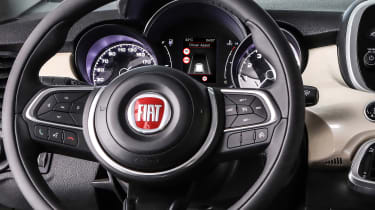
The vehicle safety (‘show me, tell me’) questions in the practical driving test are designed to verify that you have a basic knowledge of how to check that your car is safe before getting behind the wheel. They get their name as one requires you to show something, while the other requires you to tell something. Fortunately, there is a set list of questions for this part of the test, which you can find on the UK Gov website.
Example show me questions
- Question: When it’s safe to do so, can you show me how you wash and clean the front windscreen?
- Question: When it’s safe to do so, can you show me how you’d operate the horn?
Example tell me questions
- Question: Tell me how you’d check that the brakes are working before starting a journey.
Answer: Brakes should not feel spongy or slack. Brakes should be tested as you set off. Vehicle should not pull to one side.
- Question: Open the bonnet and tell me how you’d check that the engine has sufficient oil.
Answer: Identify dipstick/oil level indicator, describe check of oil level against the minimum and maximum markers.
Can I use my own car for a driving test?
Learner drivers are allowed to use their own car for a driving test, but your car must adhere to certain rules.
If you wish to use your personal car for a driving test, you car must:
- be taxed
- be insured for a driving test (check with your insurance company)
- be roadworthy and have a current MOT (if it’s over 3 years old)
- have no warning lights showing, for example, the airbag warning light
- have no tyre damage and the legal tread depth on each tyre - you cannot have a space-saver spare tyre fitted
- be smoke-free - this means you cannot smoke in it just before or during the test
- be able to reach at least 62mph and have an mph speedometer
- have 4 wheels and a maximum authorised mass (MAM) of no more than 3,500 kg
The DVSA has warned that if a car is deemed to be too dirty, the driving test may be cancelled. You should tidy the inside of the car before the test, by removing any rubbish or unnecessary items.
Your car must be equipped with an interior rear-view mirror for the examiner, learner plates and a suitable passenger seatbelt and headrest.
The car itself also has to have good visibility for the driving test examiner so the MINI convertible, Ford KA convertible (StreetKA), Smart ForTwo, Toyota IQ and Volkswagen Beetle Convertible are listed as cars that cannot be used.
General driving ability tips
So this is it, the part of your practical driving test where you actually have to drive. The instructor will give you directions around a set route that’s designed to place you in a variety of different road and traffic conditions. Drive as you have been doing during your lessons and don’t get hung up on little mistakes.
You will also be required to carry out a simple manoeuvre at the side of the road during this section. These include: making a stop at the side of the road, pulling out from behind a parked vehicle and a hill start – an emergency stop may be required as well.
Reversing your vehicle tips
Reversing your vehicle shouldn’t be as hard as some people might make it seem. Make sure you follow the advice your instructor gave you during your lessons and go at your own pace. There are only three potential manoeuvres: parallel park, bay parking, or reversing on the right-hand side of the road for around 2 car lengths before rejoining the traffic. The only scope for confusion is whether or not you should be driving or reversing into the bay parking space, but the instructor will tell you which one to do.
Independent driving test tips
In this section of the UK driving test you will drive independently for around 20 minutes while following either a satnav or street signs. The sat nav will be set up for you and you cannot use your own. The key to this section is to forget about the invigilator sitting next to you and focus on driving.
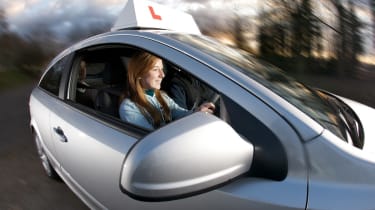
Remember; this isn't an exercise in navigation, the priority is to drive safely and well at all times. It doesn't matter if you do go the wrong way, as the examiner will help you get back on route. Also, if there are any covered signs or discrepancies in the sat nav instructions, the examiner will provide directions.
Passing or failing
There are three types of faults you can get during your practical test: a driving fault (a minor), a serious fault and a dangerous fault (both of which count as majors). During the test you can accrue up to 15 driving faults and still pass, but a 16th fault will mean failure. When it comes to serious or dangerous faults, it's 'one strike and you're out'.
If the examiner thinks you're a danger to other road users, they will stop the test immediately. Otherwise, you'll be able to complete the test and return to the test centre where you'll be told whether you've passed or failed. If you pass, you can start driving straight away, you need not wait for your licence to arrive. You must make sure that your car is correctly insured, though, as a learner policy will no longer cover you.
If you have failed but believe that you shouldn’t have, you can appeal the decision. You cannot change the result of your test, but you can get a free retest. Aside from that, if you fail you will need to pay and book another test at least 10 working days from your failed attempt.
Passing your practical driving test: 10 expert top tips
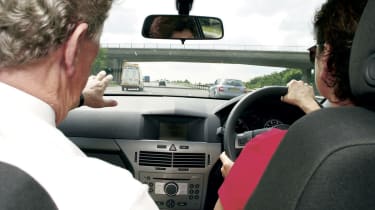
We spoke to Dave Childs, an instructor with the RED Driving School for the past 15 years, to find out some top tips on learning the skills needed and how to stay calm on your test day.
Here are the top ten to help guide you right from the very beginning, before you’ve even turned a wheel, through to the big day of your practical test.
1. Plan your time
Give yourself a sufficient amount of time to learn how to drive and pass your test. Don’t try to rush the process, as many skills are developed through experience and taking numerous tests can be expensive. Let your instructor advise you on when you are ready.
2. Budget
There are many costs to take into consideration when learning how to drive so make sure you’ve got the budget in place to see it through. Costs include a provisional driving licence, theory test, professional driving lessons (the UK average is 45 hours) and the practical driving test.
3. Have regular lessons
If possible, keep your lessons regular and try to aim for two hours a week behind the wheel. This will help you progress consistently, boosting your confidence, whilst not allowing time to forget what you’ve already learnt and maximise the time spent with your instructor.
4. Record your progress
Keep yourself motivated by noting down when you’ve reached a big milestone and celebrate it. Some tutors use a progress log that helps pupils keep track of where they are on the syllabus, but if yours doesn't then consider making your own.
5. Practice, practice, practice
Once you’ve gained some experience with an instructor, get a friend or relative to take you out for extra practice on the road if possible. One of the key ingredients of driving is gaining experience, which brings with it confidence. So spend as much time as you can behind the wheel. There are rules about who can accompany a learner - they must be over 21 and have had a full licence for over 3 years. Make sure you have the relevant insurance in place, too.
6. Stay focussed in between lessons
Use interactive online learning tools and practice spotting potential risks on the road. This will give you a deeper understanding of situations that may occur and how to avoid them.
7. Pass your theory test early
Aim to pass your theory test after 10-14 hours of practical training. Once this has been passed, you can book the practical test and concentrate on working towards the ultimate goal.
8. Take a mock driving test
Do at least one mock test, under test conditions and using a test route. This will help you prepare for the big day and help to settle your nerves as you will know what to expect. An important point is keep the date of your real practical test quiet - the more people you tell the more pressure you will feel on the day.
9. Get a good night’s sleep
Make sure that you don’t have a late night before the day of the test. If you have time, have a lesson beforehand to settle the nerves and get you thinking in the right way about your driving.
10. Keep calm
Any time you feel tense, either that you’ve lost your focus or that you’ve made a mistake on your test, remember to concentrate on your breathing and take a few deep breaths. This will calm your mind, stop you dwelling in the past and help you focus on the next instruction. Remember, any mistake you feel you’ve made may only be minor, in which case you can still pass your test. Also, don’t feel shy if you don't understand something, ask your examiner to repeat any instructions you’re not sure of.
After you've passed your test
Driving is an ongoing learning experience and lessons do not have to stop once you’ve passed your test. Most instructors will be happy to help you develop your skills in areas such as motorways, night driving, or driving in poor weather conditions.
Pass Plus is a popular choice and can possibly reduce the cost of your insurance. Telematics insurance, where the insurance company monitors how you drive with a ‘black box’ fitted to your car, is another option to consider.
What are your top tips for passing the driving test? Let us know in the comments section below...
First Cars on Auto Express...

Everything you need to know about learning to drive, getting your driving licence and choosing your first car...
Learning to drive
Passing your driving test
- Driving theory test: everything you need to know
- Hazard perception test: what to expect and how to pass
- Driving test 'show me, tell me' questions: hints and tips
- Practical driving test: how to pass
- Driving test pass rates explained
- Driving test aids product test
- History of the UK driving test
Getting your first car
- Best first cars for young drivers
- Cheapest cars to insure
- Cheaper car insurance for young drivers: our top tips
For all the latest car news, features, tips and advice, follow Auto Express on Twitter and like us on Facebook...






